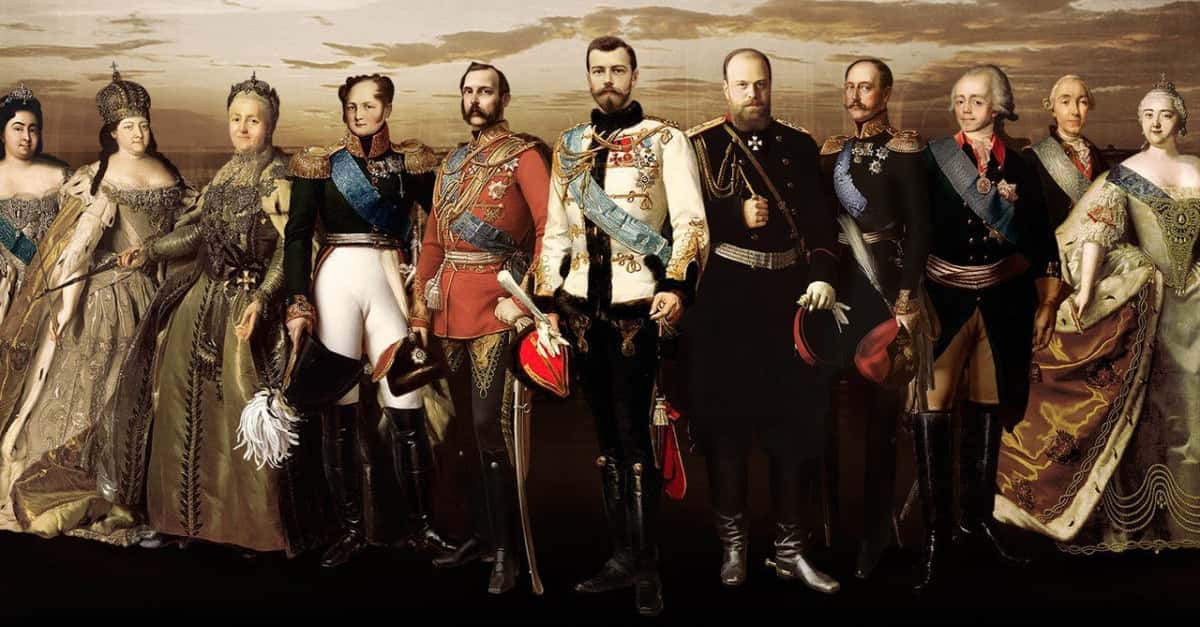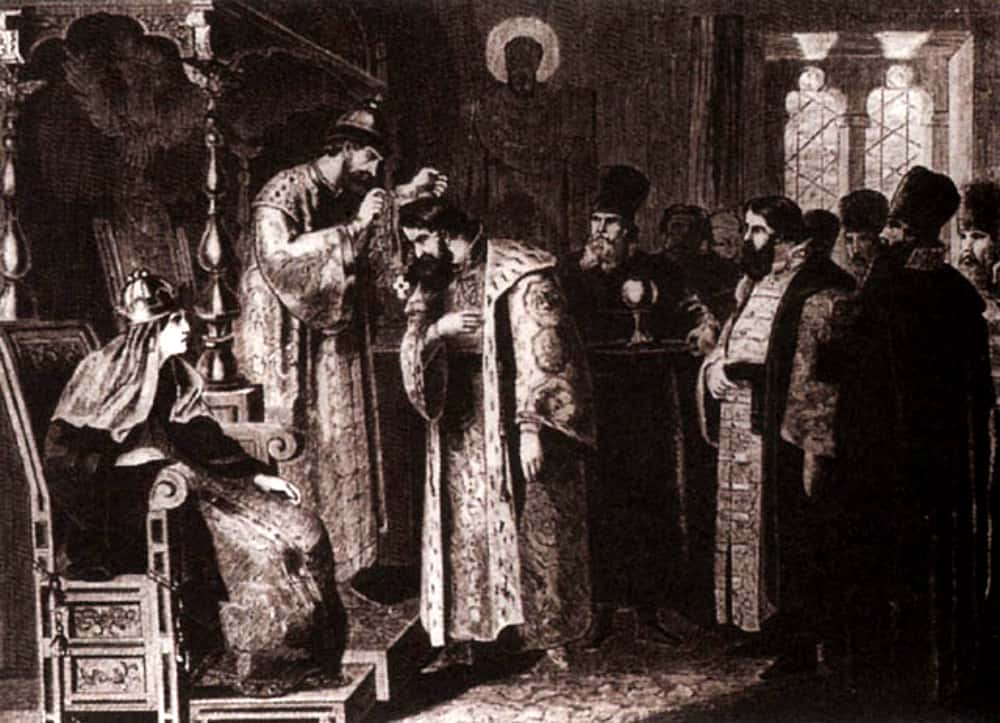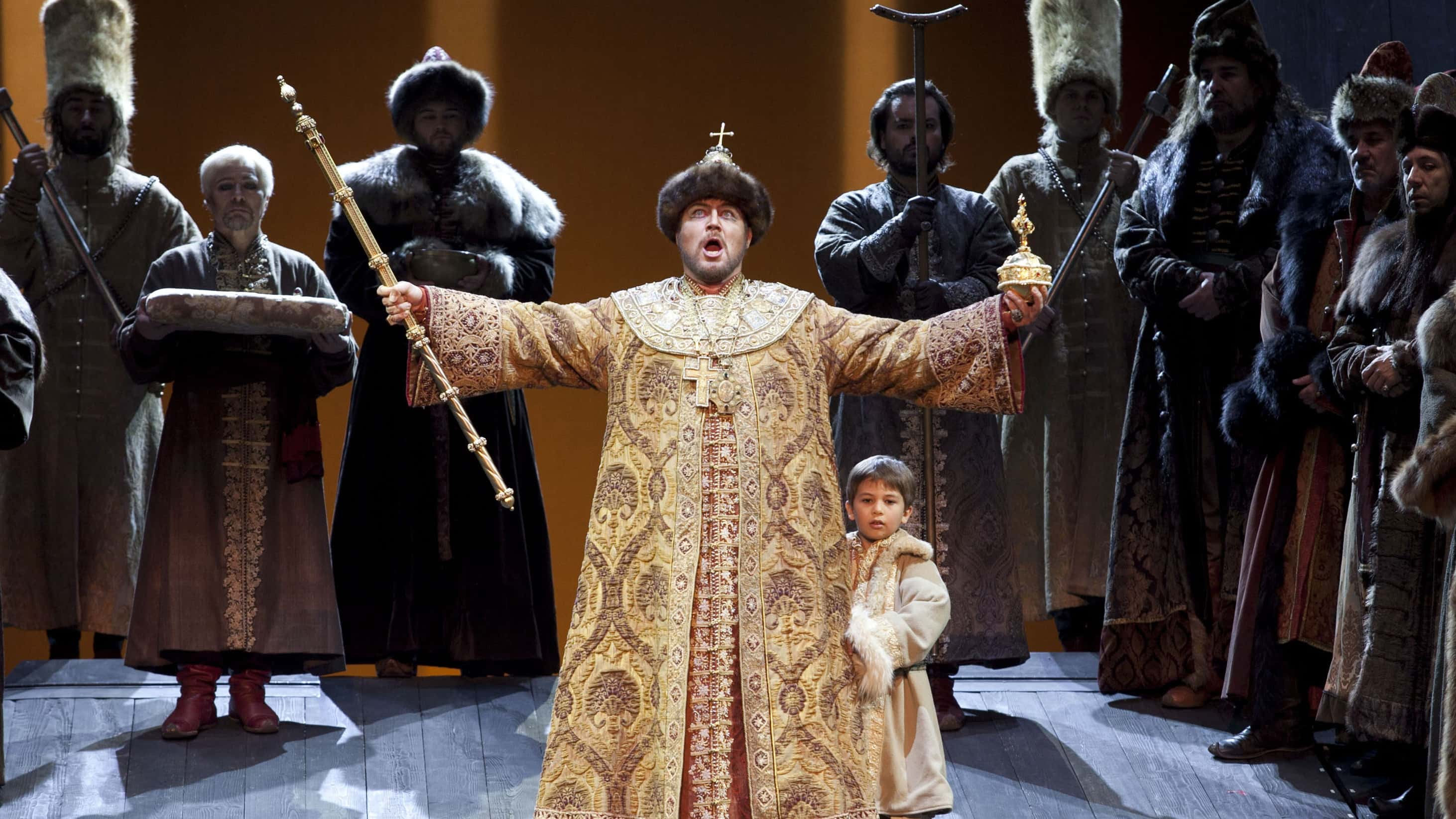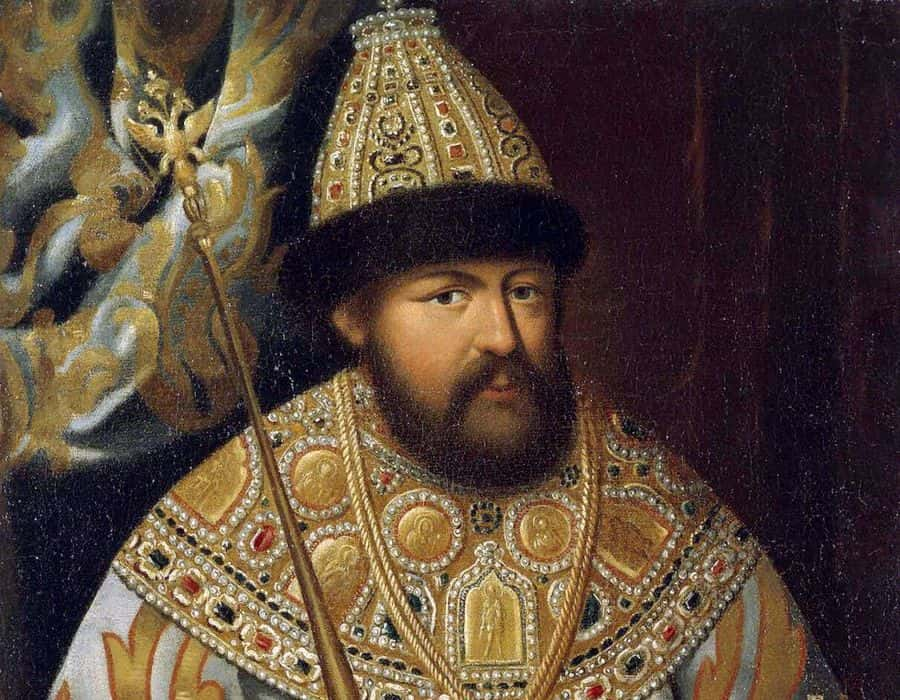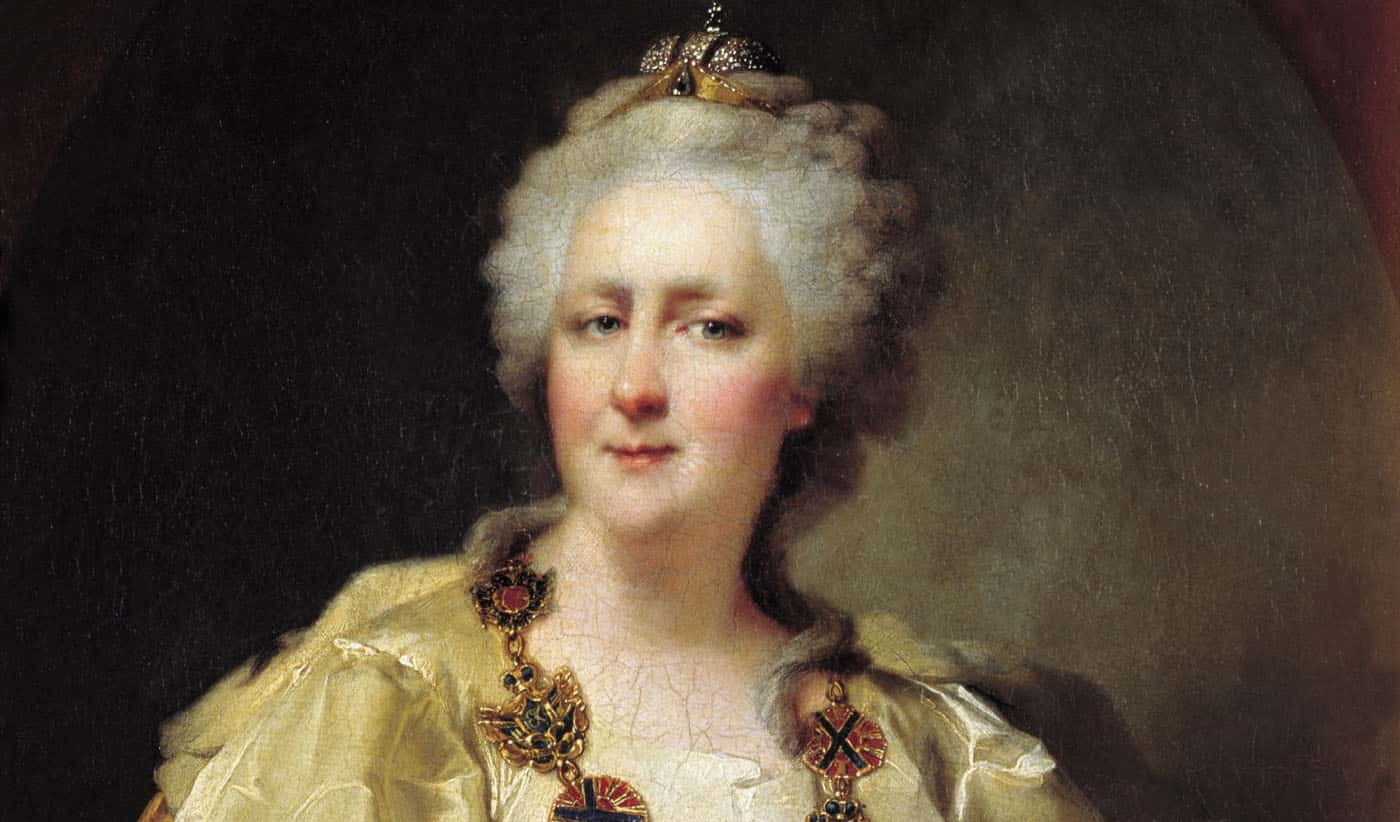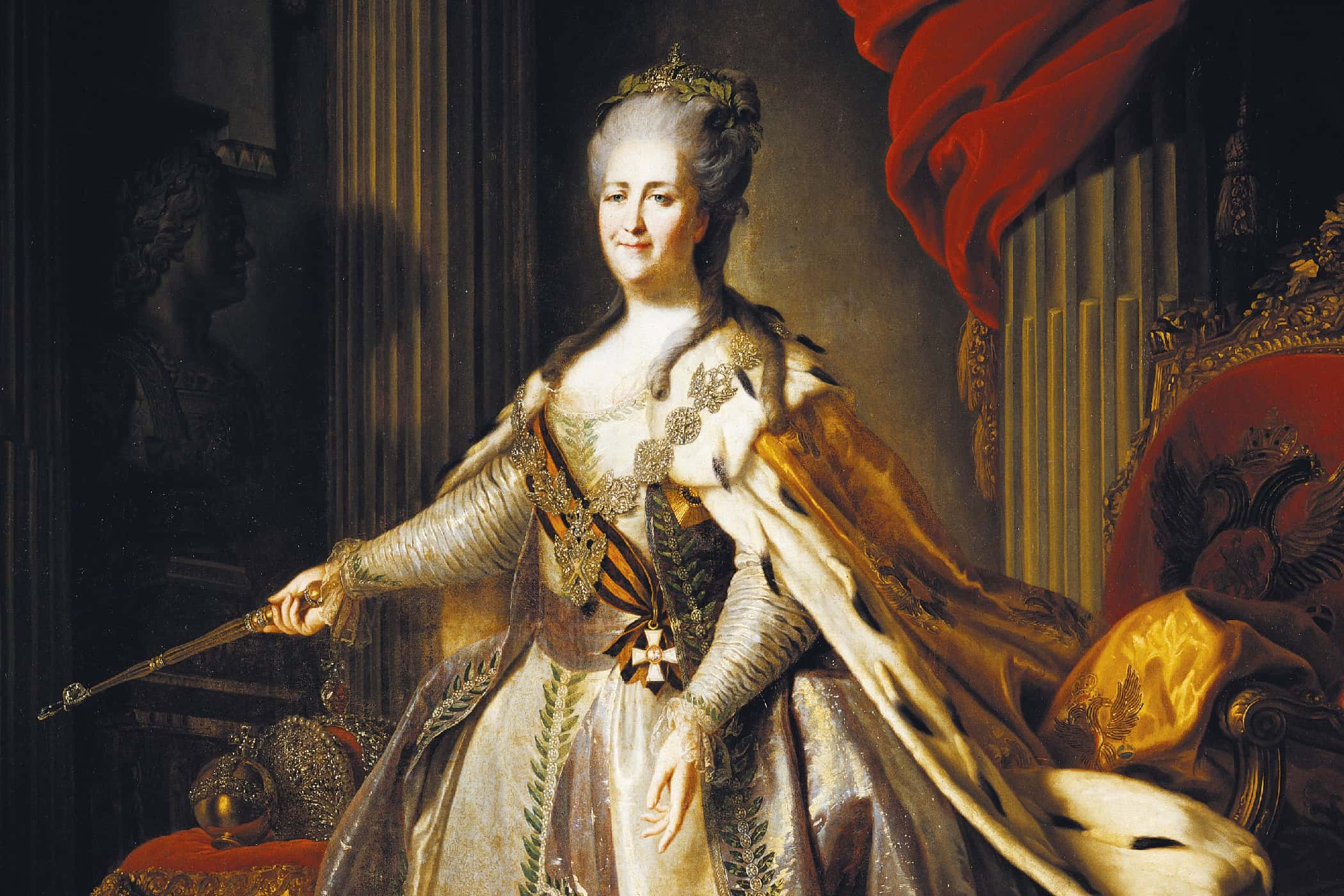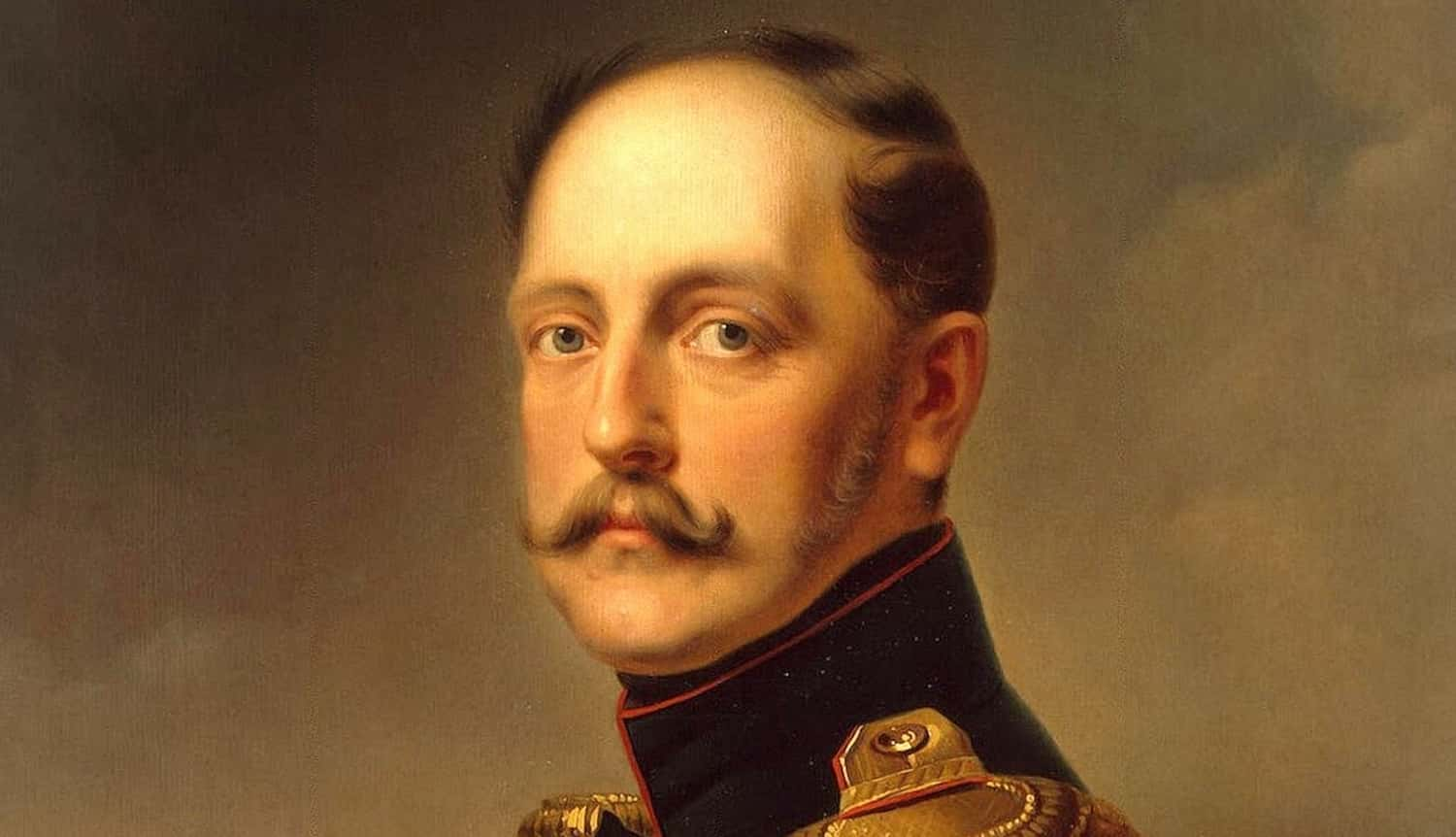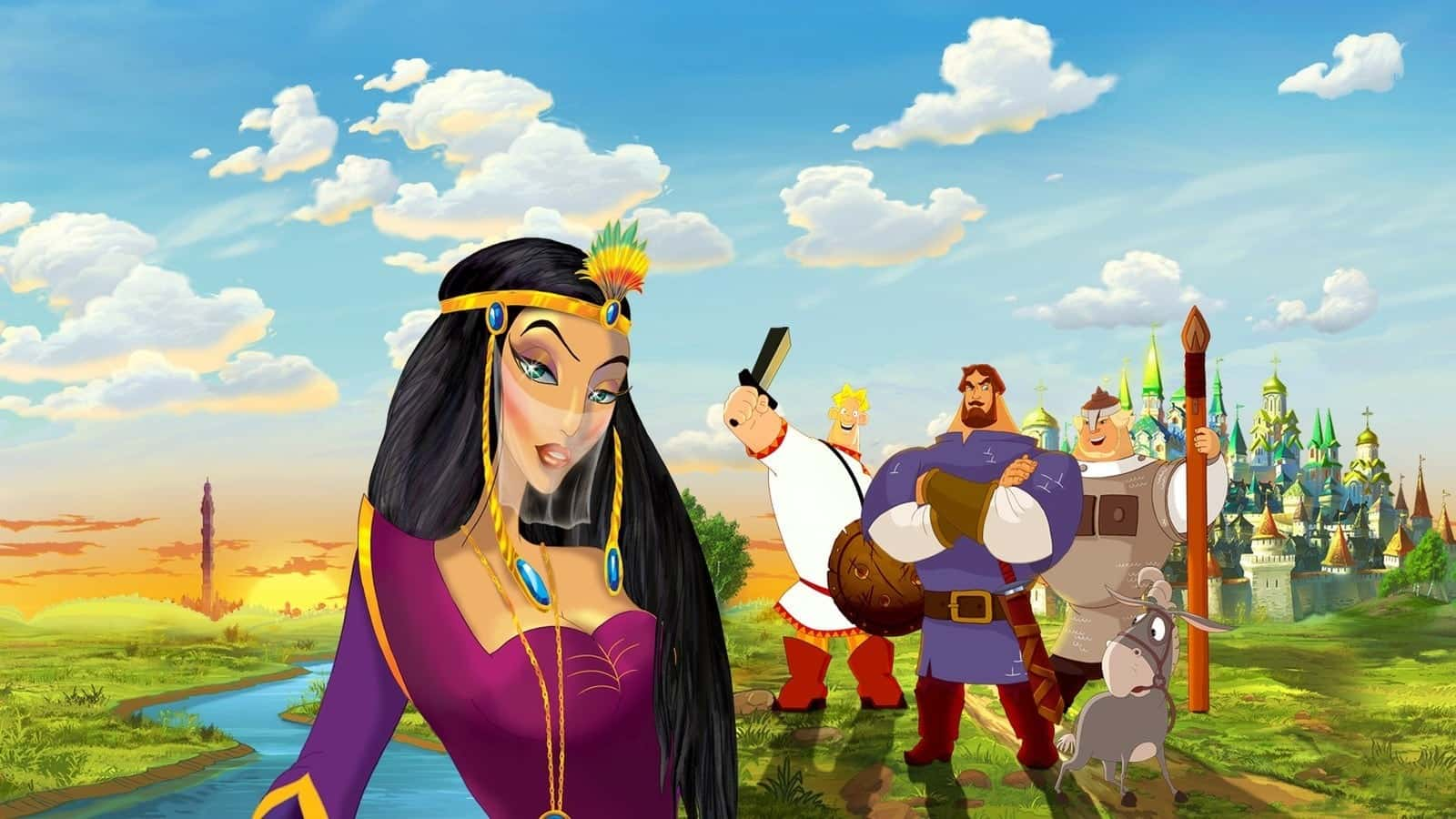Before 1917, the Tsars had ruled Russia for centuries, relying on their absolute authority to maintain power. Were they bloody tyrants or benevolent rulers, and how did they manage to form Russia into one of the largest empires ever seen in human history? These facts will provide some insight.
Tsars Facts
44. No! We’re Not Named After the Monkey!
The word "Tsar" is a Russian word meaning "emperor" that has its origins in the Latin language. The original word, appropriately, was "Caesar."
43. Not Quite Grand Enough
Starting around the 9th century AD and going from there, the Russian peoples had been ruled by Grand Princes based in either Kiev or Novgorod. However, in the 15th century, a new power bloc emerged from the squabbling Russian states: the Grand Duchy of Moscow.
 Pinterest
Pinterest
42. It’s Time to Take Power
The Grand Duchy of Moscow clawed its way up the ladder to become the most powerful state in Russia. Not only did they grow stronger than their rivals and conquer them, they also defeated the Golden Horde after centuries of Mongol-Tatar raiding. They also took on the title of "Tsar" for the first time in Russian history.
41. That’s a Good Title, I’ll Use That
Although Ivan III liked to call himself the Tsar, he was never officially crowned as the Tsar. That came about in 1547, when his grandson, Ivan IV (aka The Terrible) was officially named the Tsar of all the Russias.
40. Following in Father’s Fearsome Footsteps…
After Ivan IV’s son and heir, Ivan Jr., found himself on the sharp end of the royal scepter, it fell to his other son Feodor to become Tsar after his father. However, historians agree that Feodor likely had at least one kind of disability that hindered his rule. It didn’t help that Feodor allegedly didn’t consummate his marriage until up to 12 years after his marriage. The only child he sired, a girl, tragically died in her second year.
39. …Except Where England’s Concerned
Ivan the Terrible had been very keen on an alliance with England, something that England’s queen, Elizabeth I, didn’t quite get behind. However, Ivan pushed for an exclusive trade deal with England anyway, so a man named Sir Jerome Bowes was the English ambassador to Moscow. Bowes lived an extravagant lifestyle under Ivan’s rule, but Feodor turned out to be cut from a different cloth. He tore up the exclusive trade deal with England, declaring Russian trade open to everyone.
38. Oh, Now You Wanna Talk?
Ironically, this rejection of England made Elizabeth pursue the kind of alliance that she’d denied Feodor’s father. She wrote several letters that bordered on alluring and accusing, much like an ex-partner. Feodor was having none of that, however, and rejected her calls for alliances.
37. I Miss the Good Old Days
After Feodor’s death, Boris Godunov took over as Tsar due to Feodor dying childless. Sadly, while he had been a decent regent when Feodor was alive, things were less smooth when Godunov finally got his taste of official power. Making matters worse, freezing temperatures in the summers of 1601-1603 (likely caused by a massive volcanic eruption in Peru) led to millions of Russians starving to death. The common people revolted and turned brigand, while the nobility didn’t respect Godunov’s authority.
36. A Little Anarchy
When Godunov died, the nation was thrown into chaos. Various pretenders to the throne rose up and tried to become Tsar. The Time of Troubles–as this time period is called–only got worse as foreign nations invaded or supported the pretenders. Finally, the Grand National Assembly stepped in and chose their new Tsar.

History's most fascinating stories and darkest secrets, delivered to your inbox daily.
35. Nobody Could Follow Us!
The longest-running family of the Tsars were the Romanovs. They ruled Russia for over 300 years, until the Tsars were relieved of their power in a completely peaceful and cooperative manner (ahem).
34. The Elected Emperor
Surprisingly, the long-lasting dynasty of the Romanovs had a very shaky start. Tsar Michael Romanov was a mere 16 years old when he took the Russian throne. And yet, this timid boy would have absolute rule over Russia, and his descendants would too.
33. Sounds Like a Nice Guy
Tsar Michael I of Russia was described as a gentle and pious prince, but that speaks nothing of what he was like as a husband. While his first marriage ended after a few months due to illness, his second marriage lasted longer, though maybe that was a pity for Eudoxia Streshneva. She was under great pressure to produce a son, and when she finally did provide an heir to the throne, Michael showed his appreciation by no longer wanting to share his bed with her.
32. Early Starts
Conditions were harsh in Russian history, even for the ruling Tsars. Many of them were crowned between the ages of 15 and 17, including Michael I, Alexis, and Feodor III.
 Pinterest
Pinterest
31. Let Them Cheeks Show!
Inspired by the example of western Europe, Peter the Great dragged Russia kicking and screaming away from its traditions and into embracing a more modern way of life. This included, among many other things, the removal of the long beards that Russian nobles prided themselves on. To encourage them to visit the barber, Peter imposed an annual beard tax on them. Suffice it to say, the nobles loved money more than their beards.
30. Some Things Take a Long Time to Change
Sadly, being picked as a Russian Tsaritsa had some drawbacks. They were expected to be neither seen nor heard in public where other men could interact with them. And yet, they were also obligated to contribute to religious ceremonies and charitable organizations, and that’s before even mentioning their taking care of the royal household.
29. The Divisive Tsar
Tsar Alexis of Russia was given the nickname “the Quietest” by his contemporaries, but this was in stark contrast with his reign, which saw a revolt or uprising of some sort nearly every year that he was Tsar. This had to do with his reforms upsetting the status quo at the expense of one group or another. The increased taxes on such things as salt led to the Salt Rebellion of 1648. When Alexis tried to switch silver coins for copper coins, he created hyperinflation in his country, which led to the Copper Riot of 1662. The latter was especially brutal, as the government either banished, drowned, or hanged thousands in their attempt to put the riot down.
28. Oh You Don’t Like My Oppression? I’ll Solve That By Oppressing You!
Perhaps because of all this trouble with the common people voicing genuine grievances against the corrupt and overly wealthy upper class, Tsar Alexis issued laws that reduced the peasants to being serfs, bound to the land and at the mercy of landowners.
 Pinterest
Pinterest
27. The Sickly Tsar
Feodor III was a very educated man with an eye for great reforms, and he had an experience in fighting against the odds: he was horribly crippled physically by a mysterious disease, likely scurvy. Feodor pushed for several liberal reforms, including founding the academy of sciences and abolishing the rule of "place priority." This allowed administrative positions in the civil and military service to be appointed by merit rather than which noble family had the first call.
26. Really Puts Last Year’s Thanksgiving Into Perspective
Sadly, Feodor III died of an illness at 20 years of age. This led to the Moscow Uprising of 1682 (of course it did). The sudden power vacuum created a period of chaos. Feodor’s half-brothers, Ivan and Peter, were too young to take charge. As a result, Feodor III’s stepmother, Natalya, and his sister, Sofia, fought with each other for the regency. The family squabble lasted for years until Peter I took power.
 Civilization V Customisation Wikia
Civilization V Customisation Wikia
25. What a Mouthful
The title that was given to Tsar Alexis at his coronation read as follows: “Great Tsar and Grand Duke of the whole of Russia, the Tsar of Moscow, Kiev, Vladimir, Novgorod, the Tsar of Kazan, Astrakhan, Siberia, Pskov, Tver, Yugra, Perm, Vyatka, Bulgaria, etc., the Tsar and Grand Duke of Novgorod lowlands, Chernigov, Ryazan, Rostov, Yaroslavl, Beloozero, Udor and other northern lands, the Tsar of Tver grounds, Kartalina and Georgian king’s and Kabardian lands, Cherkass and highland prince’s and many other eastern, western and northern states and the grounds from time of many ancestors and the successor to the throne, sovereign and owner.” We sure hope the attendants didn’t have to repeat that phrase after it was first spoken.
24. Did He Also Sing Hakunnah Matata?
During the regency period after Feodor III’s death, his half-brother Peter was unofficially exiled from Moscow, along with his mother, Natalya, by Sofia while she was the regent. This was, however, a blessing in disguise for Peter, since he grew up in a small village, participating in outdoor activities and sailing. He also traveled to Germany, where he got a taste of western Europe and never looked back.
 Youtube
Youtube
23. Can We Get Any More Powerful Than This?
In 1721, Peter I (AKA the Great) decided that the Tsardom needed a more European-sounding name. He christened himself Emperor of Russia, which was now called the Russian Empire. These titles lasted until the end of the monarchy in Russia, nearly 200 years later. However, the title "Tsar" continued to be the more popular choice of title, no doubt making Peter I gnash his teeth in anger.
22. Beside Every Great Man
Peter the Great is said to have married his second wife, Catherine, in secret in 1707. She and Peter had a genuine connection, based on surviving letters that they wrote each other, and while the new capital city of Russia, St. Petersburg, was being built, Peter arranged for himself and his family to live in a simple log cabin that had a grand total of three rooms. Much was said of Catherine’s support for Peter, especially when he was seized with one of the epileptic fits or mood swings that he suffered in his life.
21. One Title Isn’t Enough!
More than anything, the Russian Tsars, Emperors, and Empresses loved power. Alexander I of Russia was no exception. With all the wars going on in the start of the 19th century, Alexander I became the first ruler of Russia to also be crowned the Grand Prince of Finland and the King of Poland! Ironically, he was not one of those Russian rulers known as “the Great” (and we like to think that bothered him immensely).
 Civilization V Customisation Wikia
Civilization V Customisation Wikia
20. Progressive Policy
During its history, the Russian Empire was ruled by four Empresses. In case you’re not sure, that’s four more women than have been President of the United States.
 Youtube
Youtube
19. Playing With Toy Soldiers
Emperor Paul I of Russia was quite the eccentric, and in the history of Russian rulers, that has to mean something. In Paul’s case, he disliked the uniforms of the Russian army and replaced them with uniforms that were in the style of the Prussian military. However, these uniforms were not practical at all, leading to lots of resentment towards the Emperor. Things got worse when it came to Paul’s obsession with military parades. He demanded perfection to such an extent that he commanded a blundering regiment to literally march to Siberia as punishment. Thankfully he changed his mind, but not until they had already marched 10 miles down the road.
18. From First Lady to First Empress
After Peter the Great’s death in 1725, his wife became Catherine I, the first Empress of Russia. Catherine was also a reformer and would prevent the aristocracy from putting the commoners in their places. One of the men in her court was Pyotr Tolstoy, who was the ancestor of famed Russian novelist Leo Tolstoy.
17. It’s a Game of Hot Potato!
Alexander I of Russia spent a good amount of time flip-flopping sides during the Napoleonic Wars, which meant he was at some of the absolute high and absolute low points of Napoleon’s career. He was part of the alliance that was crushed by Napoleon at the famous Battle of Austerlitz. Alexander then made an alliance with Napoleon, but things soured when they disagreed over what was to be done with Poland, so then Napoleon tried to invade Russia. As we know, that didn't work out so well (some things never change, eh World War II?).
 Pinterest
Pinterest
16. Gotta Fill Those Numbers!
The Napoleonic Wars were fondly remembered by Alexander’s successor, Nicolas I of Russia. Under Nicolas, the Russian army contained 1 million men in a population of up to 70 million people. One way that Nicolas maintained this high number? He made it obligatory for all 18-year-old Jewish men to serve in the army for 25 years. We wish we could say that this is the worst that things got for Jewish people in Russia.
15. Henry VIII Wants to Organize an Intervention
If you ever wonder why the peasants grew to hate the Tsars, consider what Tsar Alexis’ lunch was like. The royal court would sit down, with the Tsar seated separately, and more than 50 different dishes would be brought out. The Tsar would get to choose his favorite ones and have them brought to his special table. Not surprisingly, Alexis would later die of extreme obesity.
14. No Wonder They Called Him Great
One of Tsar Peter I’s most well-known traits was his incredible height, especially for the 18th century. At 6'8", he was a literal giant among men. However, his proportions were reportedly ill-suited to his tall frame. His hands, feet, and head were all said to be slightly too small for such a long body, so we’re wondering if he was ever tortured on the rack before he became Tsar.
13. Emancipation’s in the Air
Emperor Alexander II of Russia ruled from 1855 to 1881, and he was responsible for one of the biggest reforms in the history of Imperial Russia. In 1861, Alexander II signed the Emancipation Edict, which finally freed the Russian peasants from serfdom. Coincidentally, Lincoln issued the Emancipation Proclamation just two years later in the United States.
12. An Ironic Legacy for a So-Called Reformer
Despite his many attempts at reforming the Empire, Alexander II had many enemies. The growing anarchist cause saw the Russian Emperor as their ultimate enemy, and he violently suppressed separatist movements. After avoiding many assassination attempts, the Tsar was finally killed when bombs were thrown at his carriage in 1881. His son and grandson, both future Tsars, witnessed his death. That experience, coupled with the backlash in Russian politics, led Alexander III and Nicholas II to becoming very autocratic and conservative Tsars.
11. What Goes Around Will Come Around
Alexander III, in particular, undid much of what his father had intended to do before his assassination. In an attempt to end the revolutionary movement once and for all, he cracked down on various groups. An assassination attempt was planned on Alexander III’s life, but the conspirators were caught and hanged. One of these men was Alexander Ulyanov. What’s special about him was that he was the older brother of Vladimir Lenin, the man who would eventually play a large hand in finally overthrowing the Tsars for good.
10. If Anyone Calls Me Prince Peg-Leg One More Time….!
Tsar Michael I of Russia had a terrible horse riding accident during his youth. The accident left him crippled in one leg, and the injury only worsened as he got older. Near the end of his life, he had completely lost the ability to walk.
9. You Had Another Chance and You Blew It, Peter
Peter the Great wasn’t great at being a grandfather. He had disliked his first wife and had always quarreled with his son, and so he gave little attention to his grandson, despite the fact they shared the same name. Peter Jr. lived in isolation until his grandparents' deaths. When he became Peter II, he showed zero interest in being a decent ruler. He let the newly formed Russian fleet waste away, he doubled down on serfdom, and moved the capital back to Moscow after all the work Peter I had done to make St. Petersburg the modern city of Russia. Maybe if he’d gotten his grandson a teddy bear or something once in a while?
8. What a Woman!
Peter II didn’t live long enough to continue dismantling his grandfather’s legacy, however. He died of smallpox in 1730 at the tender age of 14. With heirs being scant at the time, his 37-year-old cousin, Anna, became the Empress of Russia. Unfortunately, while she continued certain policies that her uncle Peter I had begun, her reign has become known as a “dark era” in Russian history. She was infamous for her cruelty: she was known to ridicule disabled people, which even 18th century Russians thought was indecent.
7. Approved by the NRA
Among her many eccentricities, Anna of Russia kept a rifle by her window so that she could always shoot at birds whenever she had the urge to go hunting but was too lazy to actually leave her room.
6. Russian Rivalry
One thorn sticking in Anna of Russia’s side was her cousin, Elizabeth. The intelligent daughter of Peter I and Catherine I had lost her parents and fiancé and had been removed from the line of succession in favor of Anna. However, while Anna made sure that Elizabeth didn’t get any new marriage proposals from the nobility, her famed beauty made Anna resent her even more. According to legend, when Anna asked a visiting minister who the most beautiful woman in Russia was, the minister didn’t take the hint and went for the honest answer, pointing at Elizabeth. Anna had her revenge, though: when she discovered that Elizabeth had a romance with a handsome sergeant, Anna had the man’s tongue cut out and banished him to Siberia.
5. Now It’s My Turn
Even as Anna’s health declined, Elizabeth built up a following amongst those loyal to Peter I’s memory. Anna named Ivan VI as her heir when she died, but this didn’t last long. Elizabeth, like so many Russian rulers before and after her, mounted a coup that deposed and imprisoned the infant Ivan before he even learned how to say his own name. However, unique to Elizabeth, not a single person died during her coup, and Ivan VI was allowed to grow up, albeit under guard. Elizabeth went one further and promised to never sign a death sentence if she became Empress. Amazingly, she kept her word.
4. The Overlooked Tsar
Unfortunately, Elizabeth I was not necessarily the best person to raise a child. Elizabeth became involved in raising the boy who would become Paul I of Russia, but through a host of caregivers who still managed to neglect the child a large amount of the time. Reportedly, there was an incident where the infant fell out of his bed and spent the rest of the night sleeping on the floor without anyone noticing. To add insult to injury, when Paul became (an unpopular) Emperor and then was duly assassinated, his own son Alexander did nothing to punish his father’s killers. Talk about being the family black sheep!
4. Oh Absalom… I mean Alexei!
Peter the Great faced many threats to his rule, but in 1718, he faced a particularly personal one. His own son and heir, Alexei, was suspected of treason against his father. Alexei confessed under torture, and he was sentenced to death by the courts. His execution orders, however, needed to be signed by the Emperor of Russia, and Peter allegedly hesitated to go through with the sentence. Ultimately, it didn’t matter, as Alexei died in prison (reportedly from the injuries that come from being tortured). His death meant that Peter no longer had any male heirs, and so the throne passed first to his wife, then his grandson.
2. What a Way to Fire Someone!
Peter III of Russia wasn’t exactly a popular man. While he did push through reforms, they made him highly unpopular with the military and the nobility. No less a figure than his wife, Catherine, plotted a coup against the Emperor in 1762. Imagine Peter’s reaction upon being approached by his wife, the Empress, and being forced to sign a paper confirming his abdication while he was being arrested. Peter later died under mysterious circumstances, potentially with Catherine's involvement. Speaking of which, this was the story of how Peter's wife Catherine became Catherine II, Empress of Russia. You may know her as Catherine the Great.
1. Russian Idol… Or Should We Say, Russian Bride-ol, Hah!
During the period of the Tsardom, the wives of Russian Tsars, also known as Tsaritsas, were often chosen by the Tsar in an aristocratic competition known as a Bride-Show. Eligible maidens from noble families were presented to the Tsar all at once, just to make it all the more awkward for the girls that he didn’t choose. This tradition was frequently used by Ivan the Terrible and continued to be used by succeeding Tsars until it was abandoned as one of Peter the Great’s many reforms of Russia. Peter also strove to get rid of the practice of arranged marriages, as he thought they led to unhealthy relationships (much like how his first marriage turned out).
Sources: 1, 2, 3, 4, 5, 6, 7, 8, 9, 10, 11, 12, 13, 14, 15, 16, 17, 18, 19, 20, 21, 22, 23, 24

